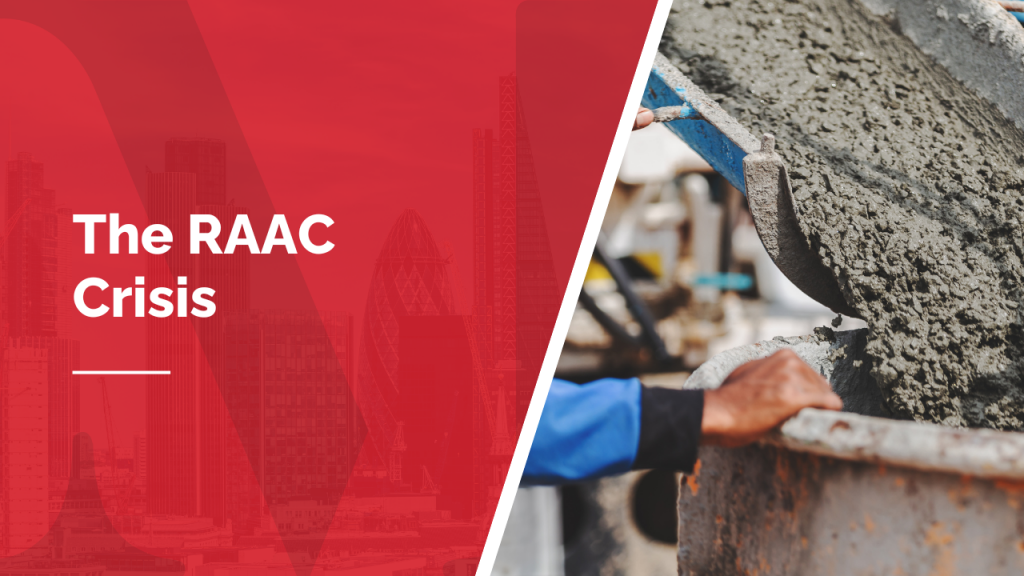Reinforced autoclaved aerated concrete (RAAC) made a dramatic entrance into public awareness in late August this year. Days before the start of the school year, the government ordered over 100 school buildings to close their doors. The crisis rapidly extended its reach from schools to encompass approximately 24 hospital trusts, which were instructed to prepare emergency evacuation plans. Subsequently, theatres, concert halls, libraries, student accommodations, residential buildings, courts, and university facilities were affected. RAAC has even been discovered in airports and fire stations.
So, what is RAAC?
RAAC, despite its name, differs significantly from traditional concrete. Originally developed in Sweden during the 1920s, RAAC found widespread use in the UK from the mid-1950s to the mid-1990s. During the UK’s post-war construction boom, RAAC played a central role. It was favoured for its cost-effectiveness, rapid manufacturing and ease of installation in comparison to other structural materials. However, the Building Research Establishment (BRE) published a report in 1996, which revealed excessive deflection and cracking in several RAAC planks. Following this discovery, the use of RAAC in the UK for new construction and maintenance was halted.
The risks of RAAC
RAAC doesn’t inherently carry a significant danger; its potential threat depends on certain factors. Originally, RAAC was expected to have a safe lifespan of approximately 30 years, and as such, most RAAC structures in the UK have surpassed this intended duration. In 2022, the government officially deemed all RAAC in buildings as “life-expired and liable to collapse.” While this categorisation implies that all RAAC in the UK has the potential to be hazardous, it doesn’t necessarily mean that every RAAC plank poses an immediate risk. Nevertheless, in recent years, there have been instances of RAAC planks in public buildings suddenly giving way, raising concerns about the potential for significant harm in the event of further collapses.
Why are buildings closing now?
In 2018, an incident occurred at Singlewell Primary School in Kent, where a section of the flat roof above a staffroom collapsed on a Saturday evening. If this collapse had taken place during school hours, it could have resulted in injuries. Since then, the Department for Education (DfE) has been strongly advising schools to promptly assess their facilities. Education Secretary Gillian Keegan informed Parliament in September that her department became alarmed when three RAAC panels collapsed during the summer without any prior warning. In the most recent incident, which occurred at a school in late August, the affected planks had been previously assessed as “non-critical” by engineers.
What happens now?
Although schools have taken the spotlight, RAAC could be lurking within any building constructed between the 1950s and 1990s. The process of evaluating and addressing RAAC issues varies depending on the type of building. For example, the roadmap for schools is expected to be highly tailored to each case. For schools housing RAAC, there are a number of options, including placing the RAAC panels with a trapezoidal metal deck, fortifying against water infiltration with a waterproof membrane or enhancing the structure surrounding the RAAC planks to render them redundant. The degree of risk associated with RAAC hinges on whether it is part of the structural elements, its exposure to water damage or modifications and the condition of its reinforcement. For various buildings, especially in the private sector without an overarching governing body, the response to RAAC might be less coordinated. Although there are instances of RAAC that pose an imminent threat, not all require immediate attention. However, ensuring the safety of all RAAC-affected buildings could entail a time span of months or even years.
Remember, if you are faced with a construction dispute, Mercantile Barristers will be happy to assist. Do use the enquiry form below to contact us to discuss your matter further.





